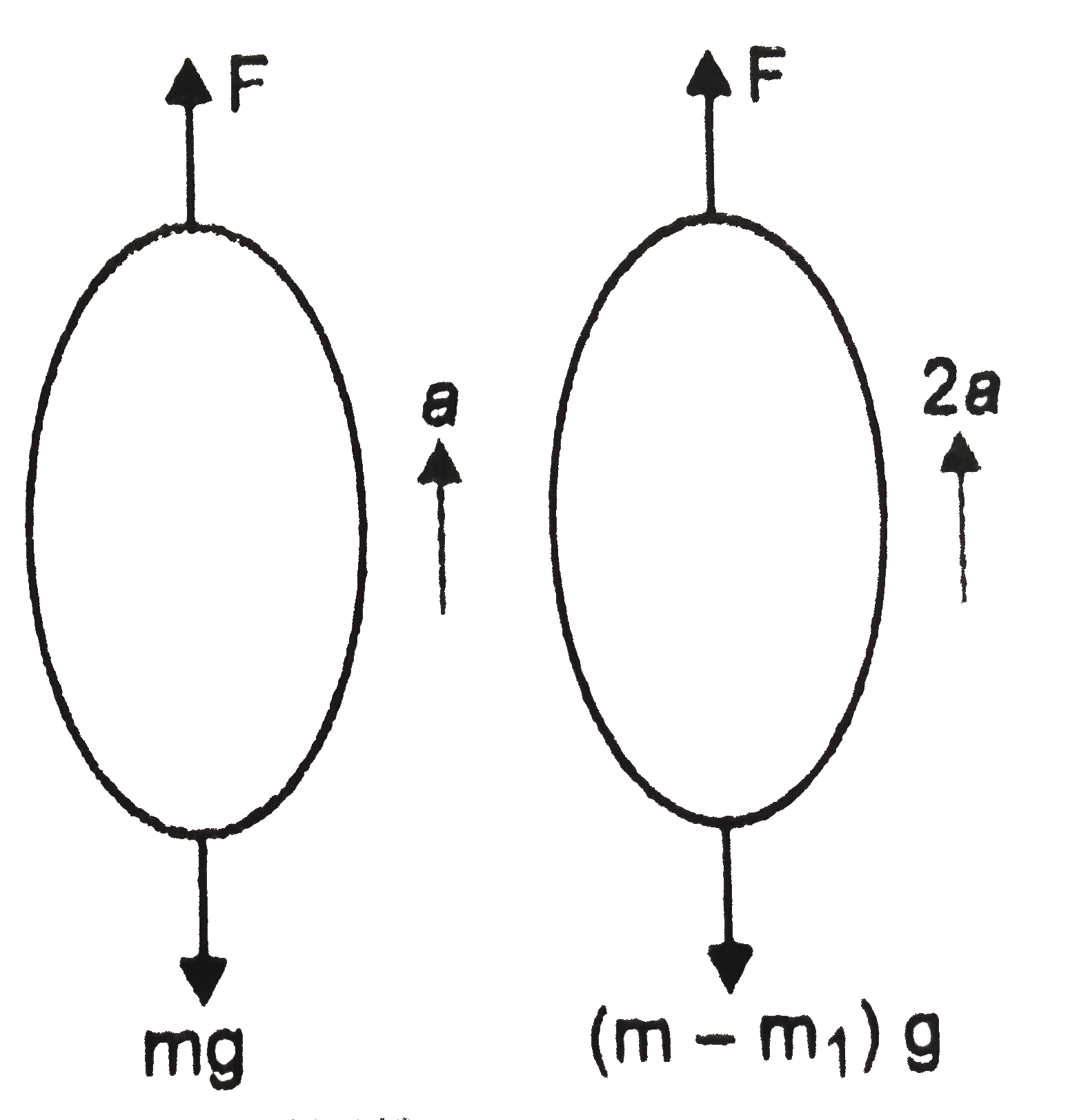The force which keeps a hot air balloon is the buoyant force F. Suppose a hot air balloon ofmass M has a downward acceleration of magnitude a.Find the ballast mass that must be dropped from it to cause the balloon to accelerate upward with same magnitude a.'
The correct Answer is:[2Mag+a]
Step by step video, text & image solution for The force which keeps a hot air balloon is the buoyant force F. Suppose a hot air balloon ofmass M has a downward acceleration of magnitude a.Find the ballast mass that must be dropped from it to cause the balloon to accelerate upward with same magnitude a.' by Physics experts to help you in doubts & scoring excellent marks in Class 11 exams.
Updated on:21/07/2023Topper's Solved these Questions
- NEWTONS LAWS OF MOTIONBOOK - PHYSICS GALAXY - ASHISH ARORACHAPTER - NEWTONS LAWS OF MOTIONEXERCISE - Advance MCQs
17 Videos
- LINEAR MOMENTUM & ITS CONSERVATIONBOOK - PHYSICS GALAXY - ASHISH ARORACHAPTER - LINEAR MOMENTUM & ITS CONSERVATIONEXERCISE - exercise 1.3
3 Videos
- RIGID BODIES AND ROTATIONAL MOTIONBOOK - PHYSICS GALAXY - ASHISH ARORACHAPTER - RIGID BODIES AND ROTATIONAL MOTIONEXERCISE - Unsolved Numerical
63 Videos
Similar Questions
A balloon of mass m is descending down with an acceleration How much mass should be g2 removed from it so that it starts moving up with same acceleration?
View SolutionA balloon of mass m is descending down with an g/2 acceleration How much mass should be removed from it so that it starts moving up with same acceleration
View Solution
Knowledge Check
A balloon of mass M descends with an acceleration a0. The mass that must be thrown out in order to give the balloon an equal upwards acceleration will be
AMa0gB2Ma0gC2Ma0g+a0DM(g+a0)a0Find the friction force due to air on a body of mass 1 kg falling with acceleration 8m/s2 :-
A2 NB4 NCZeroDNoneA balloon of mass M and a fixed size starts coming down with an acceleration f(fltg). The ballast mass m to be dropped from the ballon to have it go up with an acceleration f. Assuming negligible air resistance is find the value of m
A(Mg+f)fBMf2(g+f)C(2Mfg+f)Dm(g+a)g
An aerostat of mass m starts coming down with a constant acceleration w. Determine the ballast mass to be dumped for the aerostat to reach the upward acceleration of the same magnitude. The air drag is to be neglected.
View SolutionA hot-air balloon of mass M is descending vertically with downward acceleration of magnitude a. How much mass (ballast) must be thrown out to give the balloon an upward acceleration of magnitude a? Assume that the upward force from the air (the lift) does not change because of the decrease in mass.
View SolutionA ballon of mass m is rising up with an acceleration a show that the fraction og weight of balloon that must be detached in order to double its acceleration , assuming the upthrust of air to remain the same

View SolutionA hot- air balloon consists of a basket, one passenger, and some carge. Let the total mass be M. Even though there is an upward lift force on the balloon, the balloon is initially acceleration downwards at a rate of g/3.
(a) Draw a free-body diagram for the descending balloon.
(b) Find the upward lift force in terms of the initial total weight Mg.
(c ) The passenger notices that he is heading straight for a waterfall and decides he needs to go up. What fraction of the total weight must he drop overboard so that the balloon accelerates upward at a rate of g/2? Assume that the upward lift force remains the same.
View SolutionA balloon of gross weight w newton is falling vertically downward with a constant acceleration a(<g). The magnitude of the air resistance is:
View Solution
